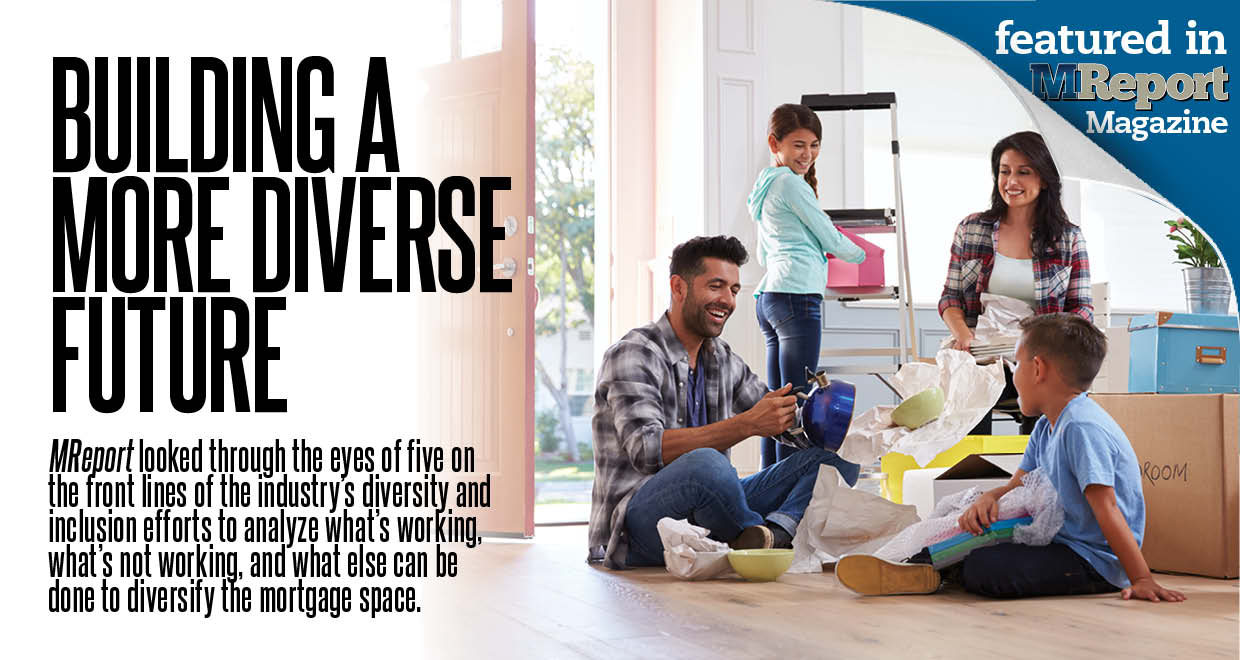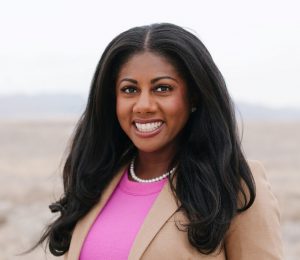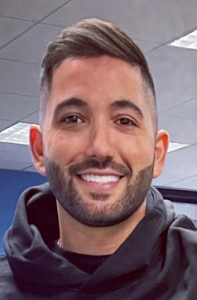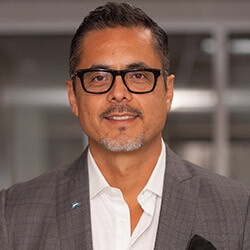
As the nation struggled through the pandemic, the housing market seemed to be revitalized, and a variety of factors played a role in this kickstart.
According to a recent National Association of Realtors (NAR) survey, U.S. homeownership rate surged 1.3% to 65.5% in 2020—the highest annual rise ever—as 2.6 million more households became homeowners compared to 2019.
Among the 2.6 million new households, new emerging markets were blazing new paths. NAR’s data found that white Americans (72.1%), Asian Americans (61.7%), and Hispanic Americans (51.1%) all achieved decade-long highs in homeownership in 2020, with the rate of Hispanic Americans setting a record, exceeding 50% for the first time ever. One demographic that saw a decline was the homeownership rate for Black Americans (43.4%), which trailed behind that of a decade ago (44.2% in 2010).
“Homeownership can be a way to build generational wealth for families, but there are significant barriers to entry, especially in today’s high-priced and fast-moving housing market,” said George Ratiu, Manager of Economic Research for Realtor.com. “There are a number of programs available to help first-time buyers break into the market, but many people either don’t know that these programs exist or don’t know where to start in finding one that works for their situation.”
These new markets were not the only components boosting the nation’s housing market. Outside of these new emerging markets, gender roles continue to bring diversity to the mortgage space, as a once male-dominated share had begun to give way to the growing single-female seeking to build equity and wealth through the pursuit of homeownership.
First American recently reported that despite the aftermath of the Great Recession when the overall homeownership rate reached a low point of 63% in 2016, 2021 saw that total rebound to 65.5%. This rise was led by single female-headed households (including widowed, separated, or divorced) which exceeded 53% in 2021, jumping from a low mark of 50% in 2016.
An analysis by the National Association of Realtors (NAR) further supports the claim that single women are prioritizing homeownership, as 42% of single women make financial sacrifices, compared to 32% of single men who purchase homes.
With these new and emerging markets comes the dilemma faced by the mortgage finance industry. Who is tapping into these markets? How are these new segments being marketed to? Are certain segments of these new emerging markets comfortable dealing with just anyone in closing the largest financial decision of their lifetime? Do they seek familiarity and common ground with the loan officers they are dealing with?
Using a database of 30 million profiles, employment-seeking web site Zippia polled demographics and statistics for Mortgage Bankers in the U.S. (verified against the Bureau of Labor Statistics, U.S. Census, and current job openings), finding that of the more than 50,400 Mortgage Bankers currently employed nationwide, 28.7% of this share are women, while 67.8% are male, with an average overall age of 44 years old. In terms of ethnicity, the most common found ethnicity was white (67.5%), followed by Hispanic or Latino (14.6%), and African American (8.7%), while 6% of all Mortgage Bankers identified as LGBTQ+.
MReport assembled a panel of industry experts to weigh in on the topic of diversity and inclusion in the marketplace, sharing their insight on the topic, from across the mortgage landscape.

Tai Christensen, Director, Chief Diversity & Inclusion Officer, CBC Mortgage Agency
Recent numbers show the Black homeownership rate in the United States stands at around 43.4%, which is only slightly better than it was in 1970, and nearly 30 percentage points behind the white homeownership rate of 72.1%. Why is that gap still here, more than 50 years after the Fair Housing Act?
Tai Christensen, Director, Chief Diversity & Inclusion Officer, CBC Mortgage Agency: One reason the gap persists is that minority families, on average, have just a fraction of the household wealth that white households do. Minorities who are looking to buy their first home simply don’t have the same resources other buyers do. Asking your parents for $20,000 for a down payment, for many, is ludicrous, because your parents don’t have that kind of money on hand.
But perhaps the biggest cause is that many people in the minority community have learned not to trust lenders. There’s a long history of financial services companies targeting the minority community and putting people in homes they cannot afford, followed by these homes being foreclosed. If you have a grandmother or an uncle who bought a house and lost it, why should you? This financial trauma has been transferred from one generation to the next, and it’s not going to be easy to fix.

David Abelyen, Founder and CEO, Cake Mortgage
David Abelyen, Founder and CEO, Cake Mortgage: There are several reasons why we’re not seeing more Black homeowners. Generally speaking, people of color have a lower credit profile than white borrowers, and when you’re selling loan products to people with imperfect credit, the liability falls on you as a lender. So, most lenders just stay away from these products. It’s just too much of a risk.
Another reason that gap persists is that our industry still struggles with diversity. Look at the C-suites of big companies: they’re still mostly white men. If you’re try to help people in the minority community become homeowners, your company—and specifically, your leadership team—needs to reflect that goal.
Finally, minority borrowers who do happen to become homeowners often pay much more than their white counterparts. A lot of lenders that serve lower-credit borrowers jack up their fees, rates, and points because they know these people have fewer options. So, even if you do get to the point where you can afford to get your first house, you’re being taken to the cleaners. By the way, the racial disparity is not just with homeownership. Many Black borrowers will get a loan and never refinance, even if it’s in their best interest.
What efforts are being made to close the racial homeownership gap?
Christensen: Frankly, not much. Some individual lenders are proactively reaching out to the minority community and offering programs with lower FICO requirements that lean more heavily on rental history as a qualifying requirement instead of pure credit scores. Obviously, down payment assistance can help, too. These efforts alone aren’t going to close the gap, however.
In spite of all the programs and product enhancements and opportunities that have been afforded to minority communities, the needle is not moving. In fact, the homeownership gap is growing. Right now, there isn’t enough being done either in the public or private sector to advance homeownership in the minority community. What I think is lost in the discussion is that by the year 2040, the majority of U.S. residents are going to be minorities. Unless we as an industry change course, we’re simply going to run out of customers.
What obstacles do minority borrowers face in the market right now?
Christensen: One of the most obvious is housing prices. The average U.S. home price now is nearly $400,000, which simply isn’t affordable for most minority families. At that price, you’ll need to earn at least $100,000 a year to qualify, even with a low DTI ratio. Right now, only one-fifth of Black Americans make $100,000 annually, so most are priced out of the market before they’ve even had a chance.
What should the industry be doing to address these issues?
Christensen: Probably the most important is education. In order to do better, you have to know better. Frankly, I’m embarrassed at how little housing education Americans receive, especially in the minority community. All of our down payment assistance (DPA) programs are second loans that are coupled with housing education, which we believe is the first step in creating sustainable homeownership.
Abelyen: It’s not as easy as simply focusing your marketing efforts on the minority community and saying you are committed to serving them. Often, that sort of “outreach” comes across as fake. People wonder, “Are you really doing this to help me or because you have to?” On the other hand, if you have a genuine conversation with someone and spend an hour on the phone, breaking down the numbers and explaining how homeownership or refinancing is going to benefit their life and their kids’ lives, that’s what they appreciate. But there isn’t too much of that these days.
What are some other steps lenders can take to close the racial homeownership gap?
Christensen: Lenders need to be going into minority communities and talking about the benefits of being a homeowner. They should be explaining how home equity can fuel generational wealth as well as the ability to pay for your children’s college education or start your own business. In many minority families, these are conversations that don’t typically happen at the dinner table.
The goal should be building trust with the minority community, which you can do by educating people about the power of homeownership on a grassroots level. For example, we’ve partnered with churches in the Black community to host our homeownership seminars. Large lending institutions should also think about partnering with smaller, community banks that serve majority-minority neighborhoods, since community banks are typically more in tune with who their community members are and what they need.
Abelyen: What is needed is more common-sense lending by expanding the number of factors lenders consider when determining who is a good credit risk. We have to expand homeownership opportunities to borrowers who have below 620 FICO scores but who have established themselves as responsible consumers. Of course, every loan carries a risk, but any borrower who can document that they can afford a home and has not been late with a payment over the past 12 months should have that opportunity.
I think the federal government and Fannie and Freddie can also take some of the good loan programs developed in the private sector and securitize them instead of forcing borrowers to pay higher rates. As long as a loan is underwritten soundly, every borrower should be given the same rate.
Why is homeowner/homebuyer education so important?
Christensen: Education is the first step in creating sustainable homeownership. Many minorities, for instance, are generational renters and simply aren’t aware of the responsibilities that come with homeownership. I hear questions all the time from first-time homeowners who don’t know how to fix this or that. If you grew up in an apartment and your oven stopped working, your parents called the landlord or superintendent. Transferring the utility bill from the previous homeowner to their name is also new for them. It may sound obvious to those of us who come from homeowning families, but if you’re the first person in your family to own a home, you don’t know what you don’t know.
That’s why CBC provides 18 months of post-purchase counseling to our borrowers at no cost to them. And for those borrowers that need a little extra help, we provide prepurchase counseling as well. We also require borrowers with low credit scores to meet with a HUD-approved counselor so they understand the serious commitment they are taking on and to give them a trusted advisor they can talk to if they need help.
How do you motivate loan officers to work with minority borrowers?
Christensen: One way is to change compensation models. Salespeople in our industry are motivated to be fast and efficient with their time. There’s no incentive to spend extra time and effort working with a borrower who is going to get a much smaller mortgage than a white borrower and who may never refinance. Perhaps lenders could offer a built-in salary increase for loan officers and originators who spend more time working with specific demographics of borrowers who desire to own a home but need extra handholding.
At the end of the day, eliminating racial inequities in homeownership will require a culture shift. Ideally, the more minorities we can turn into sustainable homeowners, the more able they will be to transfer their home equity to their children, so they won’t need down payment assistance. By helping minority families build a strong financial foundation, we can help turn the generational tide in their favor.
Abelyen: Loan officers aren’t rewarded for working with minority borrowers—they’re judged on profitability. If you spend time speaking with people who are not “profitable,” people think you’re not doing your job.
We really need to turn this around, and it starts with company culture. As a company, you need to make sure your goals coalesce with the loan officer’s goals. For example, millennials are driving today’s housing market, but to capture these borrowers—especially millennials from minority communities—you can’t just be there when they are ready to go. You must start at the bottom up and educate them. You also must hire people who think the same way and are naturally helpful people.
What is keeping minority borrowers from refinancing?
Abelyen: There are a lot minority homeowners who have been making their payments and would like to get a cash-out refinance to get rid of crippling credit card debt, but their lender is not willing to do that because their debt is too high. It’s a real double-edged sword. It may not be intentionally unfair to minority communities, but that’s basically what it is.
Many people in the minority community also do not refinance because they don’t trust their lender. That’s especially true if a homeowner has someone in their family who lost their home during the foreclosure crisis. Back then, my own mother, who is an immigrant from the Soviet Union, got an option ARM and was told she could make her payments anytime she wanted. She had no idea how horrible her loan was—but she wasn’t supposed to. It was just an opportunity for the lender to cash in on naïve borrowers and charge them a ton of fees, and they all got their homes wiped out.

Miki Adams, President, CBC Mortgage Agency
What are some critical considerations from your perspective when the industry is working to build and foster diversity and inclusion, on everything from team morale, employee development, and/or talent acquisition?
Miki Adams, President, CBC Mortgage Agency: From a business perspective, helping to ensure diversity, equity, and inclusion will lead to more success as a company. If your workforce looks like the community it serves, then your employees will have a clearer picture of the challenges faced by your customers. In addition, hearing points of view from people unlike yourself can provide a wealth of valuable information you wouldn’t otherwise have, and even change your mind for the better.
Roxana Davidoff, Founder and CEO, Big Purple Dot: The mortgage industry has traditionally been a male-dominated market. So right off the bat, we need greater gender diversity. As a woman who has been able to succeed as a CEO despite my gender, I see that women leaders and women-owned businesses are becoming far more common than they have ever been. That new norm we’re heading towards gives me hope.

Frank Fuentes, National VP of Multicultural Community Lending, New American Funding
Frank Fuentes, National VP of Multicultural Community Lending, New American Funding: The top consideration, I would say, is to create an internal task force comprised of diverse team members—and if possible—diverse departments, not just leadership. In the case of New American Funding, when I developed our initiative for Latino Focus, I took people from marketing, underwriting, sales, and customer service just to get various perspectives.
Another consideration is to involve your marketing team. Your marketing team plays a critical role in creating a buzz internally when you are creating these initiatives and committees. You are also going to include your human resources team. However, it is very important to bring everyone together from all your company’s different departments … I think that is the key.
What does that look like when you’re actually figuring out how to select this D&I team? What does that process look like?
Fuentes: With New American Funding, I first got together with my marketing team and sent out a companywide survey. We had probably 1,000-1,500 employees at that time, so we sent out a survey discussing what we were doing. We asked if they wanted to be involved in a leadership role or a committee role, and if they didn’t, if they had interest in continuing to receive updates on these initiatives.
The involvement of the marketing team was critical, and we are fortunate here at New American Funding that our marketing team is very diverse in both age and ethnicity. That was a huge advantage I had when assembling this team.
What are some practical ways you think can be done by the industry to help foster a more sustainable, equitable, and diverse housing ecosystem for buyers and homeowners?
Adams: At CBC Mortgage Agency, a majority of our borrowers are minorities, so we are working to ensure the people on our team reflect the diversity of the customers we serve. This can be a challenge in a state like Utah, where we are based and where more than 80% of the state’s residents are white. But it hasn’t distracted us from our focus on developing a diverse workforce.
With more than 80% of our employees working remotely across several states, we have a diverse pool to recruit from. We also look for opportunities to recruit within predominately Black-owned or Black-led organizations in Utah like the Utah Black Chamber.
Fuentes: What has worked the best for us at New American Funding has been grassroots community events … being out there in the market, and in underserved communities, teaming up with local governments and city officials, to bring education and awareness to these communities.
Between 2013-2019, we must have conducted nearly 100 different events or presentations in some capacity in underserved communities across the country. A majority of these events were B2B … they were Realtor-centric, with the idea that if we educate the real estate professionals, that will trickle down into their communities. We partnered with Freddie Mac and Radian Mortgage Insurance on this this initiative and discussed how best to interact with the Hispanic consumer. There was a lot of talk around social media, video engagement, cultural nuances, understanding the Hispanic/Latino borrower profile, etc.
What are some of the key practical takeaways that you’ve learned from your D&I initiatives, and how are you implementing these lessons and takeaways?
Fuentes: What we have learned over the years is how to adjust our internal processes to serve these consumers, because that has been a work in progress.
You must have the proper operations staff and have the right sales staff to mirror the communities that we’re trying to serve.
I think the biggest accomplishment for New American is that as we have evolved with these initiatives—our operations staff and leadership within operations has evolved simultaneously. That’s been a real blessing for us.
Obviously, that comes about because of the support we get from our leadership, the ownership of New American Funding.
When you speak about the evolution of your D&I initiatives and mirroring your customer base, is it about ensuring that the staff is more diverse, or are more trained to interact, or all of the above?
Fuentes: Number one is having a diverse staff. Number two is understanding that, even if you have that diverse staff, when it comes to processing or underwriting, let’s say, a Latino borrower in Atlanta … that file is going to consume more resources than maybe any A-paper borrower in Orange County, California, with a 780 FICO score and 20% down.
We staff up accordingly, and that requires an executive decision on budgeting to apply those additional resources to have that manpower, realizing that it takes more hands-on underwriting or processing that type of a consumer.
And that’s where we see the opportunity. Yes, it requires more resources from the top of the house, but ultimately that’s really the secret sauce.
At New American Funding, there’s two separate channels—the call center environment and there’s the outside sales. When a lead comes in, we have a small army of customer service reps, which scrub those calls. And if those individuals sense a heavy accent or difficulty in communication, then they make the executive decision to move that lead or that call to a Spanish speaking loan officer, which makes the process a lot smoother for the consumer.
What sort of changes have you seen over the course of the pandemic? Are the needs of minority borrowers changed as a result of the pandemic?
Fuentes: I think over the past two years, there has definitely been an impact on Latino borrowers. You will see positive numbers in Hispanic homeownership rates in 2020 and 2021; the trend is still moving upward. It is ticking up in the right direction.
The biggest impact is that there are a lot of markets where Latino consumers still want to meet face-to-face, and that is still a big issue in this environment.
For any other type of borrower, it works fine. “Hey, let’s jump on FaceTime, and we can have a conversation. We can talk about your financials, run your credit review with you.” They’re all good. But with a lot of Latino homebuyers, especially on the East Coast, Midwest, and Texas, they still want to have that face-to-face interaction. It remains a challenge, but it is getting better as we start opening up.
If a company lacks a strong D&I program, where should they start?
Adams: We believe diversity starts in the C-Suite, and I am living proof of that. I am a Japanese American woman who has been given a chance to lead a great organization whose mission is to help families of color and other low-income and minority families achieve homeownership and wealth. Helping Black and Hispanic families achieve the ability to accumulate housing wealth is so gratifying.

Roxana Davidoff, Founder and CEO, Big Purple Dot
Davidoff: Beyond gender, our customers come from a variety of backgrounds, so diversity in race and culture is a must. My parents immigrated to the United States, so I’ve witnessed the strength of cultural diversity up close. Our companies need to have people on our staff who come from the same background as our clients.
In addition to helping us gain greater insight into our customers, diversity among employees gives companies a different perspective on how to get things done.
Fuentes: The most important thing is to just put feelers out there internally, and see where everybody’s mindset is regarding diversity and inclusion. In this day and age, you would probably get more participation than you would three or four years ago when it comes to initiatives of this nature.